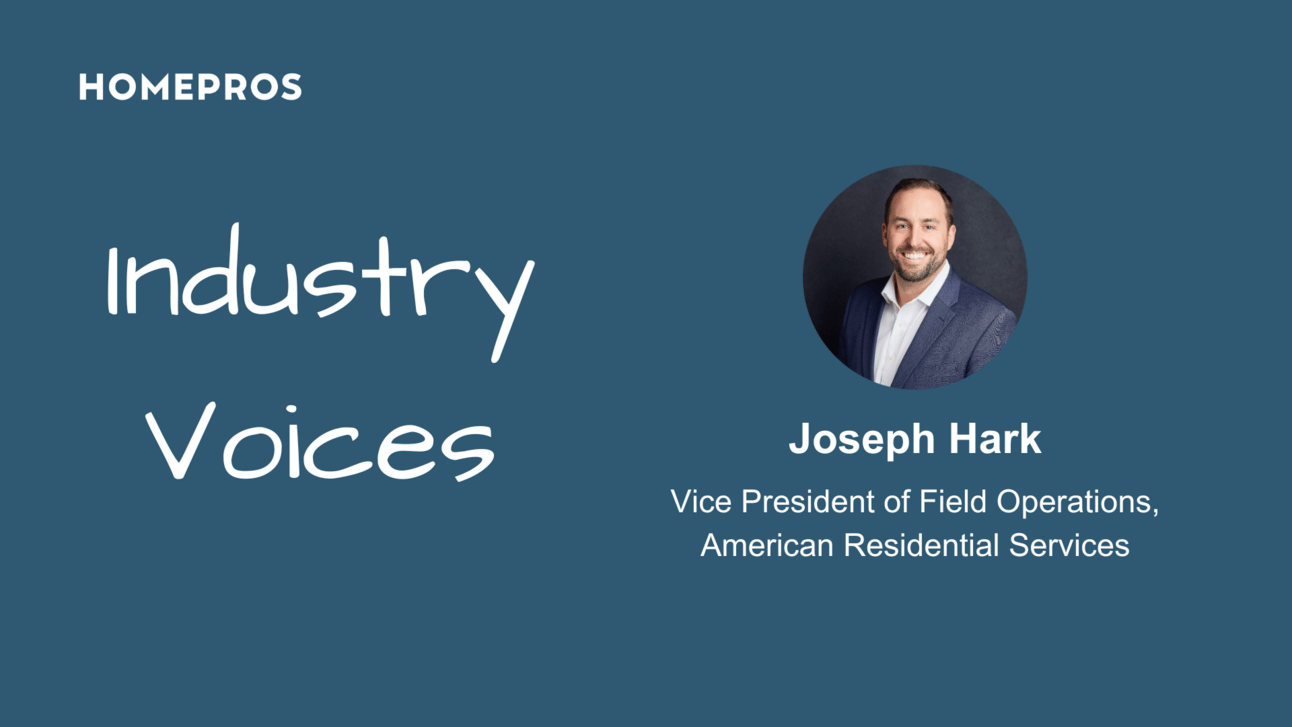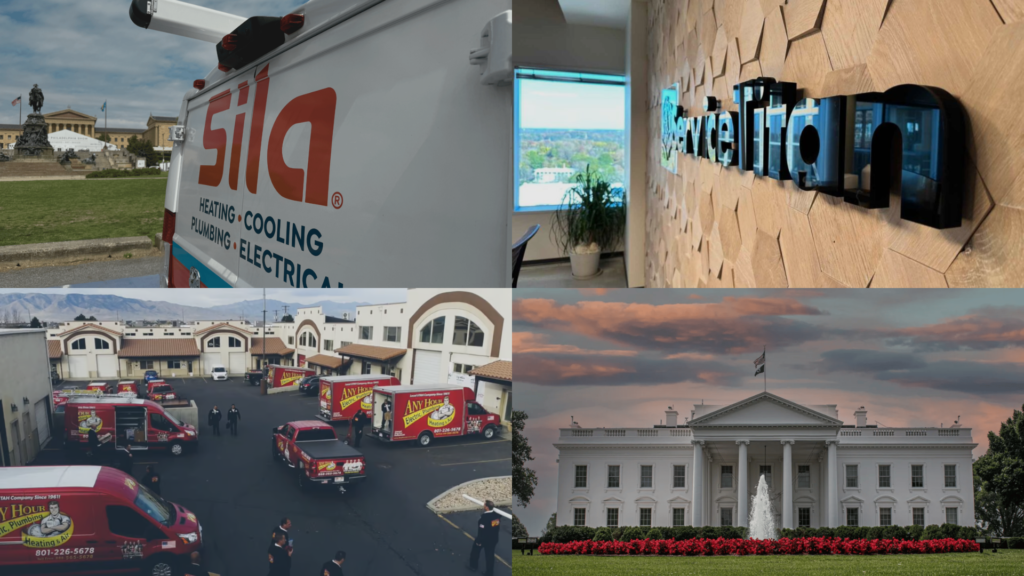Industry Voices: American Residential Services’ Joseph Hark
October 20, 2023

📸 Snapshots
“We need to make sure we have enough R-410A around to service the units going in today for the next ten-plus years.”
“The $9 billion in rebate money, once programs are in place, is expected to go quickly, so the tax credit will likely have a more material impact on the industry.”
Joseph Hark
Intro
Joseph Hark is the Vice President of Field Operations at American Residential Services (ARS).
We sat down to discuss the biggest developments affecting the HVAC industry and the future of ARS. Below is a summary of our conversation, edited for clarity:
Can you tell me about yourself and ARS?
I went to a small school called Bentley University in Massachusetts, and have a finance and accounting background. I’ve been at ARS for over a year now, and work directly with our CEO and leadership team on company-wide initiatives.
ARS operates a network of HVAC and Plumbing companies. We’ve grown organically and through acquisitions — about half of our companies are those that we acquired and left the name in place, and the other half are under the ARS brand.
We’re in 24 states and have over 6,000 employees.
What are some of the biggest developments in the industry?
Two policies: the Inflation Reduction Act and the AIM Act. Both can be confusing, so it’s important for contractors to understand the details and how to prepare for them.
Can you walk me through the details?
Inflation Reduction Act (2022)
There are two HVAC-related incentives in the IRA: Tax Credits and Rebates.
Tax Credits
-
Homeowners can claim a 30% tax credit up to $3,200 for making qualified energy-efficient home improvements.
-
$2,000 for heat pumps and heat pump water heaters.
-
The remaining $1,200 is for other upgrades including insulation material and panel box upgrades.
-
-
This credit (called the Energy Efficient Home Improvement Credit, or 25C) was set to expire, but the IRA revived it, increased the incentive amount from 10% to 30% of project cost, and extended the program until 2032.
-
Homeowners can take advantage of the credit every year to make upgrades, as it resets annually.
-
Qualification for the credit is based on equipment eligibility and individual tax status.
-
Equipment must meet the CEE’s highest efficiency tier, below Advanced.
-
Homeowners need to have adequate tax liability to leverage the credit, as it’s non-refundable.
-
To confirm eligibility, homeowners should consult with a qualified tax professional.
-
-
More details on the tax credit can be found here.
Rebates
-
Around $9 billion is allocated to two rebate programs — HOMES and HEEHR — to incentivize homeowners to make energy-efficient upgrades.
-
See details on them here.
-
-
Both programs are largely directed toward low to moderate-income consumers — those who earn up to 150% of the area’s median income.
-
Each state is responsible for implementing its own version of the programs based on guidance issued by the DOE on July 27, 2023.
-
Before states can launch the programs, they must apply for funding through the DOE to get their program approved.
-
States are currently reviewing DOE guidelines and putting together applications.
-
No programs are active as of now.
-
-
Note: Because each state’s programs will look different, contractors operating in multiple states will find it harder to navigate.
-
-
Early adopter states could potentially roll out programs in the first half of 2024, although they have until January 2025 to apply for funding.
-
States may wait for the early adopters to act first, and design their programs around them.
AIM Act (2020)
-
This act gave the EPA authority to phase down the production and consumption of HFCs (incl R-410A) by 85% in the US by 2036, with the intent of moving the industry towards refrigerants with a lower global warming potential (GWP).
-
From a government-established baseline, production of HFCs has already been cut by 10%.
-
Starting next year, production will be cut 30% more (totaling a 40% reduction from the baseline).
-
Starting in January 2025, equipment OEMs have to use new, lower GWP refrigerants in their equipment.
-
There should be a “sell through” period where dealers can sell R-410A equipment into 2025, but no guidance has been finalized yet.
-
A2L refrigerants like R32 and R-454B have been identified as the best replacement option for R-410A.
-
They’re mildly flammable but have lower global warming potential.
-
New units using A2Ls will also need to have leak sensors on them.
-
See the EPA’s full phase-down schedule here.
How are you guys preparing for these?
First, we’ve stepped up our refrigerant reclamation and recycling processes, because we need to make sure we have enough R-410A around to service the units going in today for the next ten-plus years.
We’re training our employees on handling A2L refrigerants and making sure our tools and gauges are A2L certified. We’re also thinking through any storage and transportation considerations we need to make, given the new refrigerants’ mild degree of flammability.
On the IRA front, we’ve done a lot of work to educate our field teams on what’s available. Only the tax credits are available right now, not the rebates. Unfortunately, the media (in some cases) has over-sensationalized the reporting around the rebates, leading some consumers to think they’re available now. Our field teams have to be knowledgeable enough to help homeowners separate fact from fiction.
What do the next 5-10 years look like for ARS?
Big picture, we’re excited about the 25C tax credit because it’s part of the tax code for the next ten years and will help consumers afford energy-efficient equipment. The $9 billion in rebate money, once programs are in place, is expected to go quickly, so the tax credit will likely have a more material impact on the industry.
Another tailwind for the industry is the shift toward heat pumps. Not just because of the government incentives, but because they’ll have shorter useful lives than standard ACs and furnaces, given they run year-round. And that means, theoretically, shorter replacement cycles.
We’re also developing really customer-centric sales processes, which we see as a competitive advantage. For example, we’re building proprietary technology (our own sales software) for our sales teams. On top of that, we’re making other tech investments over the coming years that will help the business keep delivering best-in-class customer experiences.
📬 Get our stories in your inbox
Keep reading
Our most-read stories of November
M&A, going public, and what's to come in 2025
HVAC tariff delay to expire, Trump plans new trade measures
The president is planning a fresh slate of tariffs on Wednesday, when a one-month delay affecting HVAC imports expires
The ripple effect: How distributor consolidation could impact contractors
Like with all consolidation, there are pros and cons. But in this case, two factors stand out


